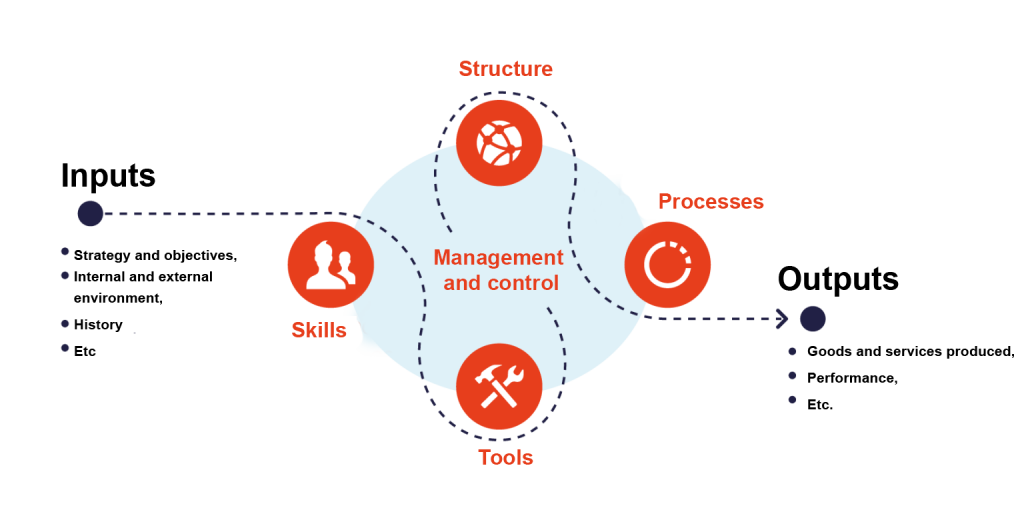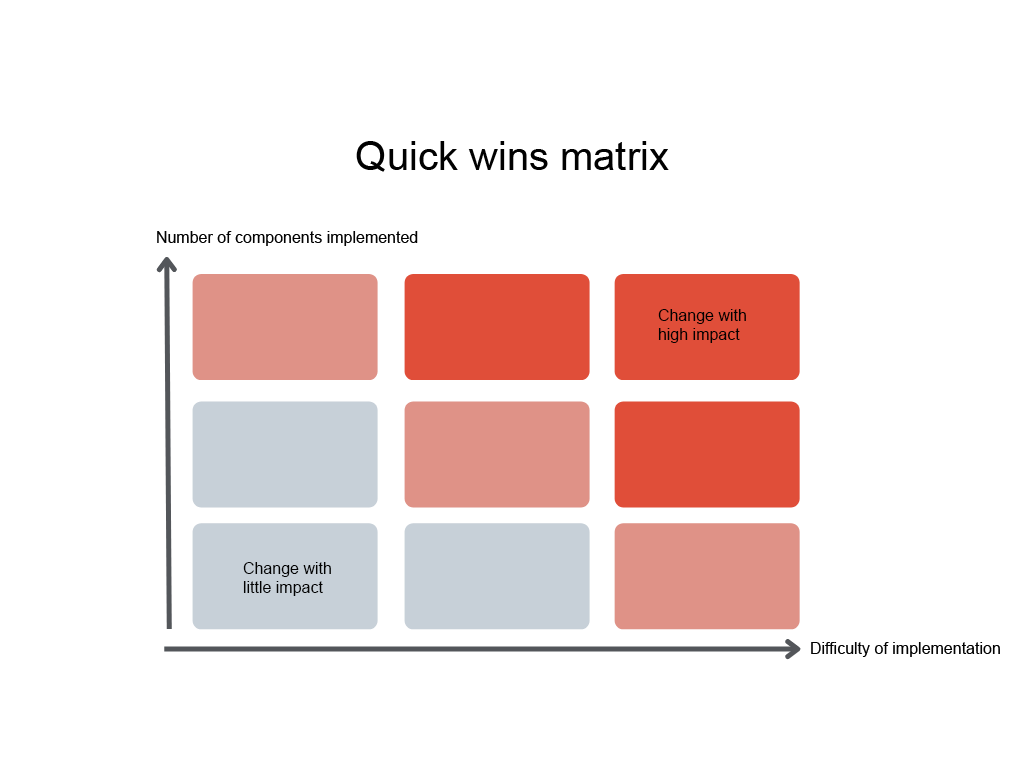In the context of change management, diagnosing the impacts of change is a study that characterises, for a project, the impacts it could have on all components of the company, namely:
- Impact on skills (material resources, actors, human factor…)
- Impact on tools (machines, IT tools…)
- Organisational impact (organigram, roles and responsibilities…)
- Impact on processes (ways of doing things, procedures…)
- Impact on governing and control bodies (management, direction…)

The result of this diagnosis will allow management to identify the elements on which the change will have the most impact. With these elements, an appropriate strategy based on adapted measures can be implemented, which may include:
- More pronounced change accompaniment (communication, training…)
- Arbitration regarding project objectives (abandoning or deprioritising certain objectives)
- Creating a margin in the budget and/or schedule
- Creating a regular study/analysis to evaluate human adaptation
- Work climate analysis
- …

How to conduct the diagnosis?

To conduct this diagnosis, the analysis can be carried out according to the following steps:
Phase 1: study and diagnosis of processes
A project is generally born out of a need/ambition for change within companies. These transformations can be detected during the description of the company’s future processes, a phase during which collaborators and management are invited to imagine a target situation/operation.
The next step is to conduct studies and a diagnosis to determine the differences between the imagined target operation and the current situation.
Formalising existing processes and target processes (using the BPMN standard, for example) can help easily visualise the change.
Phase 2: categorisation of changes
The changes identified during the studies between the current situation and the future situation can then be categorised according to their nature, such as changes concerning:
- Skills
- Actors
- Tools
- Organisational scheme
- …
It may be interesting to reference all changes within a study table (or matrix). This will allow members of strategic management to easily create groupings (e.g., all transformations related to resources).
Phase 3: qualification of changes and evaluation of impacts
The changes grouped according to their nature can then be qualified, and their impacts evaluated.
For this, it is possible to use the “Quick-wins” matrix model often used at Ad Valoris. However, in our case, we will not quantify the added value but rather the impact based (for example) on 2 criteria:
- The number of company components impacted (processes, tools, skills…)
- The difficulty of implementing this change (duration, resistance to change, cost).
The result of this analysis will provide a good overview of the general impact of the transformations brought by the project. It will also provide a plan for transformations with strong impacts, which will require particular attention.

Phase 4: prioritisation of actions / reduction of impacts / definition of accompaniment strategy
Define a response strategy, key actions, and tools (such as the diagnosis of the impacts of change)
- Define a response strategy, key actions, and tools (such as the diagnosis of the impacts of change)
- Prioritise accompaniment actions to reduce the impact of change
This will therefore promote good adaptation to change. More attention will be paid to high-impact changes than to those deemed less impactful.
The aim of this diagnosis is, of course, to promote the success of the project through good management and handling of change. This will promote adaptation and reduce the impact that could be detrimental to the work climate and the entire company.
The involvement of collaborators throughout the change accompaniment phases is a powerful lever to ensure the success of transformations. Their participation in this step is essential to prepare them and lead them to find solutions adapted to their needs according to the impact they have helped identify. This also highlights the importance of the role of management in this major step.
There are many books on the subject. To learn more, here is one of the renowned books to further your studies:
- “Change management method. Diagnosis, accompaniment, piloting” by authors David Autissier and Michel Moutot (Méthode de conduite du changement ; diagnostic – accompagnement – pilotage, Book not available in English)

Favour the success of the project

4 characteristics of impact diagnosis
- Impact diagnosis
The study evaluates the potential consequences of a project on various aspects of the company, such as skills, tools, organisation, processes, and direction. - Analysis process
Phase 1: evaluation of current processes in relation to envisaged target process.
Phase 2: categorisation of identified changes.
Phase 3: qualification of changes and evaluation of their impacts.
Phase 4: prioritisation of actions to minimise impacts and define an accompaniment strategy. - Objectives of the diagnosis
Ensure the success of the project by effectively managing change, facilitating adaptation, and reducing negative impacts on the company. - Role of collaborators
Their involvement is crucial for the success of transformations. Their participation helps to prepare and find adapted solutions, highlighting the importance of the role of management.
Contact us
Write to usFollow us on Linkedin
Follow usAller plus loin
Ad Valoris interviews Sabrina Cohen Dumani, Founder and CEO of the Nomads foundation
Interview with Sabrina Cohen Dumani, founder and CEO of the Nomads foundation...

